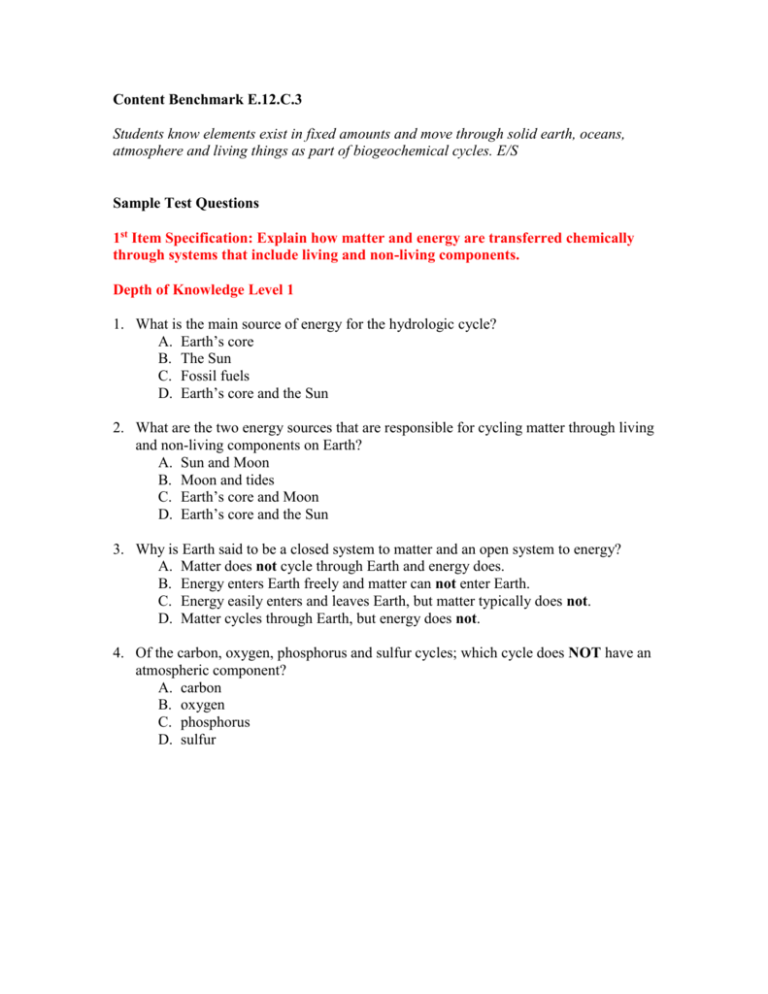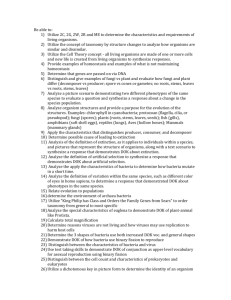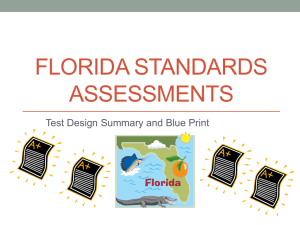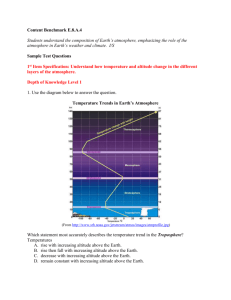printer-friendly sample test questions
advertisement

Content Benchmark E.12.C.3 Students know elements exist in fixed amounts and move through solid earth, oceans, atmosphere and living things as part of biogeochemical cycles. E/S Sample Test Questions 1st Item Specification: Explain how matter and energy are transferred chemically through systems that include living and non-living components. Depth of Knowledge Level 1 1. What is the main source of energy for the hydrologic cycle? A. Earth’s core B. The Sun C. Fossil fuels D. Earth’s core and the Sun 2. What are the two energy sources that are responsible for cycling matter through living and non-living components on Earth? A. Sun and Moon B. Moon and tides C. Earth’s core and Moon D. Earth’s core and the Sun 3. Why is Earth said to be a closed system to matter and an open system to energy? A. Matter does not cycle through Earth and energy does. B. Energy enters Earth freely and matter can not enter Earth. C. Energy easily enters and leaves Earth, but matter typically does not. D. Matter cycles through Earth, but energy does not. 4. Of the carbon, oxygen, phosphorus and sulfur cycles; which cycle does NOT have an atmospheric component? A. carbon B. oxygen C. phosphorus D. sulfur 5. The diagram below models the Nitrogen cycle. (From http://telstar.ote.cmu.edu/environ/m3/s4/cycleNitro.shtml) According to the model, in what two ways can nitrogen be removed from the atmosphere? A. lightning and nitrogen fixing bacteria B. denitrifying bacteria and cellular respiration C. lightning and denitrifying bacteria D. nitrogen fixing bacteria and denitrifying bacteria Depth of Knowledge Level 2 6. Carbon cycles through Earth’s atmosphere, biosphere, hydrosphere, and lithosphere (crust). Once carbon is trapped in the lithosphere, it can be released directly into the atmosphere through? A. volcanic eruptions. B. carbon fixing bacteria. C. physical weathering of rock. D. evaporation. 7. Which of the following statements comparing the water of today with the water that was here 100 million years ago? A. Water enters and leaves Earth during evaporation and precipitation cycles. B. The water present on Earth today is made of the same atoms but the molecules have been recycled through biologic activity. C. The atoms that made the water then were destroyed when they were used; the atoms that make up water now were made more recently. D. The molecules of water then are the same molecules that exist today. 8. A fairly common way of disposing of waste is to bury it in a landfill. The hope is that after millions of years the waste will be gone. What is the best explanation for this? A. The waste will eventually evaporate into the atmosphere. B. The waste will be pulled down into the Earth’s mantle and melted. C. Most of the waste will decompose and cycle back through the ecosystem. D. Most of the waste will be contained in the Earth where it will remain forever. 9. As volcanoes erupt they emit large amounts of carbon dioxide into the atmosphere. Since the Earth has been here for well over 4 billion years, how are volcanoes still able to emit such large amounts of carbon dioxide into the atmosphere? A. Volcanic eruptions only happen every million or so years, so there is still plenty of carbon dioxide left in the Earth. B. The carbon dioxide that volcanoes release eventually form rocks that will recycle the carbon dioxide back into the Earth. C. Most of the carbon dioxide that volcanoes release enter space and leave Earth. D. Carbon dioxide is naturally made in the Earth’s core and volcanoes allow for it to escape. 10. All animals use oxygen for cellular respiration. Why then is there a fairly constant supply of oxygen if animals have been on Earth for hundreds of millions of years? A. Oxygen enters Earth at a constant rate from space. B. Animals have only recently begun to use oxygen. C. Earth originally had a large supply of oxygen. D. Plants produce oxygen as a byproduct of photosynthesis. Content Benchmark E.12.C.3 Students know elements exist in fixed amounts and move through solid earth, oceans, atmosphere and living things as part of biogeochemical cycles. E/S Answers to Sample Test Questions 1. B, DOK Level 1 2. D, DOK Level 1 3. C, DOK Level 1 4. C, DOK Level 1 5. A, DOK Level 1 6. A, DOK Level 2 7. B, DOK Level 2 8. C, DOK Level 2 9. B, DOK Level 2 10. D, DOK Level 22











